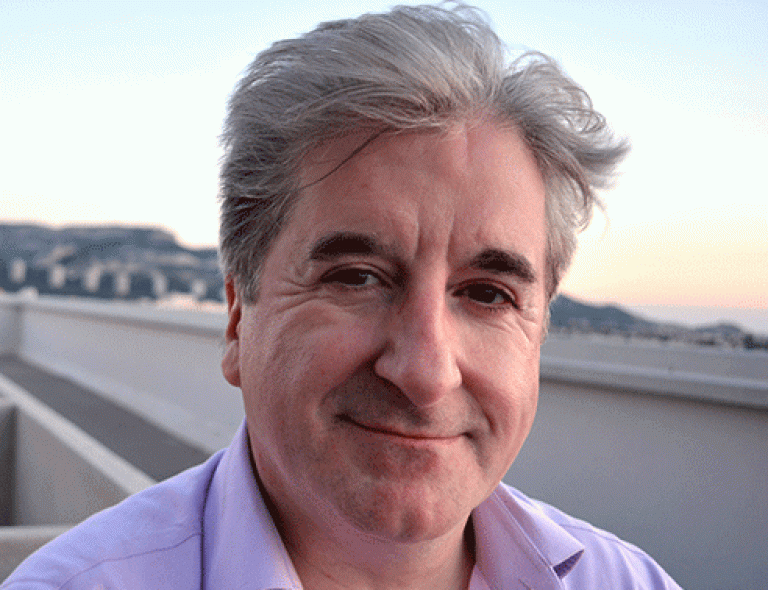Spotlight on Murray Fraser
19 December 2018
This week the spotlight is on Murray Fraser Professor of Architecture and Global Culture in the Bartlett School of Architecture. In December Murray received the 2018 RIBA Annie Spink Award for his contribution to education.

What is your role and what does it involve?
In my day-to-day life as Professor of Architecture and Global Culture in the Bartlett School of Architecture, I am highly involved in teaching design to 2nd and 3rd Year undergraduate students, while also tutoring in architectural history & theory on various MA courses and at PhD level. I relish teaching both aspects of the subject. And as a wider contribution to the Bartlett Faculty of the Built Environment, I am the Vice-Dean of Research – a role whose main focus is now firmly upon preparing our submission for the REF 2021 exercise.
How long have you been at UCL and what was your previous role?
I started out as a 1st Year architectural student at UCL’s Bartlett School of Architecture way back in October 1976, and later taught part-time here for a couple of years while finishing off my architectural history PhD in the late-1980s, under Adrian Forty’s excellent tutelage. I then took up my present post in the Bartlett School of Architecture in July 2011, arriving from the University of Westminster, where I had been the director of architectural research and of their postgraduate courses.
What working achievement or initiative are you most proud of?
Teaching-wise, it would have to be my recent receipt of the 2018 RIBA Annie Spink Award for Excellence in Architectural Education, a lifetime achievement award given by the Royal Institute of British Architects as its highest teaching accolade. Research-wise, it is my current role as General Editor for Sir Banister Fletcher’s Global History of Architecture, which has involved entirely reformulating a classic text into the most comprehensive – indeed monumental – account as yet of architecture in all parts of the world over the past 5,500 years. The new edition comprises two volumes and 102 chapters and 1 million words, and there will be an online version, both being published by Bloomsbury Press in May 2019.
Tell us about a project you are working on now which is top of your to-do list
Like other UCL academics, I have a broad spectrum of research projects on the go at any time. However, to pick out one that seems terrifyingly topical, I am currently helping to establish a pan-European research network among its top faculties of the built environment. As a part of that initiative I am personally working with colleagues here and at Chalmers University in Gothenburg on new design ideas for affordable housing in London and in that Swedish city. After spending a lot of time editing a vast text on global architectural history, it feels good to return again to design research speculations.
What is your favourite album, film and novel?
Showing my age, I listened incessantly to Joni Mitchell’s Blue as a student, and it still astonishes me today with its frankness. Films have permeated my life, usually for relaxation and escape, but for utter memorability it is impossible to beat Gillo Pontecorvo’s The Battle of Algiers. In regard to novels, there are many great ones, but none other has ever captivated me as much as Anna Karenina. I felt that I was living someone else’s life as I read it.
What is your favourite joke (pre-watershed)?
A horse walks into a bar. ‘Why the long face?’ asks the bartender.
Who would be your dream dinner guests?
Famous people one might dream of inviting could also be the last people one would enjoy sitting around a dining table with. How then about a brace of brilliant architects that I have met at informal dinners and know for sure would be great company: Eva Jiricna and the late Zaha Hadid. Rabbie Burns would be invited to slake my Scottish curiosity, Dorothy Parker for some biting wit, and Abu Abdallah Ibn Battuta could tell us what it was like to traverse so much of the globe in the fourteenth century. And can I include Pele for some chat about the beautiful game?
What advice would you give your younger self?
Always try to be friendly to everyone you meet in your field – because as sure as eggs are eggs, you will end up working with them at some point in your life.
What would it surprise people to know about you?
I was once – somewhat inadvertently – on Czech TV’s lead news item along with Waclav Havel and Jacques Derrida (yes, it’s a long story).
What is your favourite place?
This is never something to ask an architect: we specialise in collecting favourite places! London is happily my home, but who could not dream of living in Vienna, Berlin, Rio, Tokyo, Mumbai and so on? Hence setting aside buildings and cities, since I could never choose properly between them, two environments particularly mesmerized me: sitting in a geothermal spillover pool in a lava field in the snow in Iceland, watching Bjork (another of my heroines) and her ex-husband and kids splash around, and in Death Valley this August in 55 degC heat with my wife, Eva Branscome, feeling that we would expire before we ever made it back to our car.
 Close
Close

